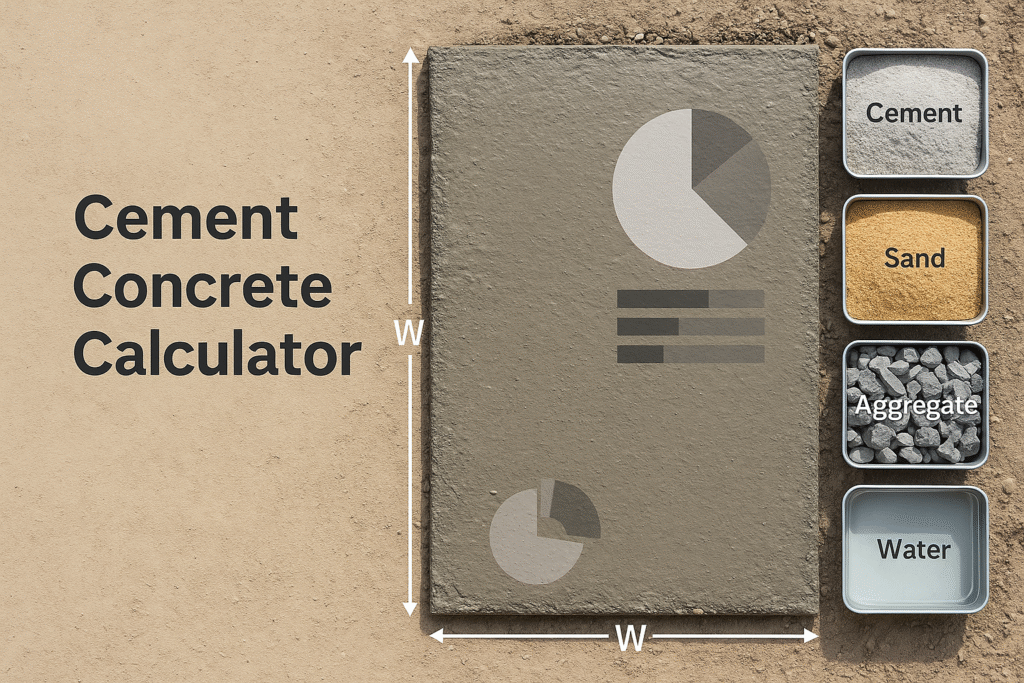Cement Concrete Calculator for wet/dry volume, mix ratios, materials, water & costs. Reverse calc, M25–M40 design mix (IS 456), plus a multi-element bill.


Cement Concrete Calculator for wet/dry volume, mix ratios, materials, water & costs. Reverse calc, M25–M40 design mix (IS 456), plus a multi-element bill.